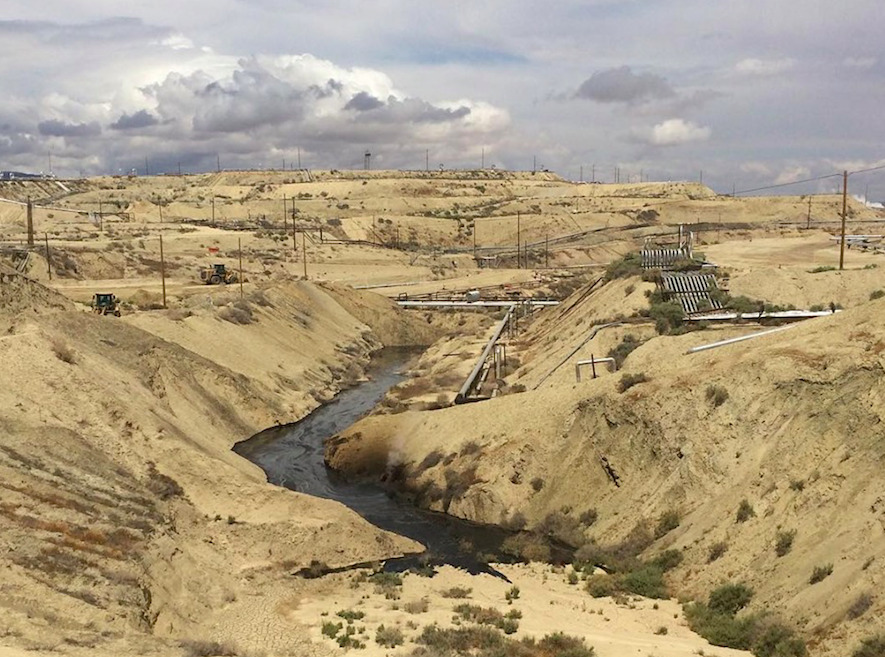
The latest California oil spill should make it loud and clear to energy companies that the time to shift more of their portfolios to renewables was yesterday—considering the fact that California has one of the most ambitious clean energy plans across the globe.
The latest accident isn’t on the Golden State’s coast, so it lacks the visual impact of other oil spills that have quickly generated a sense of urgency. Of course, the oil exploration industry in California has undergone a complete makeover since the infamous Santa Barbara oil spill of 1969. That catastrophe led to landmark environmental legislation both within the state and at the federal level.
This oil spill—which totals about 800,000 gallons of oil and water combined, the Associated Press reports—is occurring inland in Kern County, the base of California’s oil patch. For film buffs, this southern region of the San Joaquin Valley, about a two-hour drive north of Los Angeles, was the setting of the 2007 movie There Will Be Blood starring Daniel Day Lewis.
As of press time, there has been no blood resulting from the accident at the Cymric Oil Field, located 35 miles west of the city of Bakersfield. But heads have rolled, as California Gov. Gavin Newsom recently fired the chief of the state’s oil and gas division in the wake of reports that the regulating agency has issued twice as many fracking permits this year compared to 2018.
According to several press reports, Chevron, the company managing operations at Cymric, is covering the cost of the cleanup and has hired contractors to do so with state supervision. Most accounts of this accident describe the loss of wildlife as minimal, and the area affected is in a remote part of the state. The spill is largely contained in a canyon, though critics say long-term damage could prove to be problematic due to regulatory exemptions that nixed any protection of a nearby aquifer. Regulators and energy industry analysts can breathe a sigh of relief as the sense is that it the environmental damage could have been worse.
Nevertheless, the lack of photos of oil-soaked seals and birds doesn’t make this most recent California oil spill any less urgent. Opponents of California’s oil and gas sector claim that this spill demonstrates that state regulators have become complacent about their role in monitoring the region’s energy sector.
“Disasters like these are terribly dangerous yet utterly predictable,” said Hollin Kretzmann, a senior attorney at the Center for Biological Diversity, in a public statement. “California’s industry-friendly oil regulator continues to provide about as much protection as a screen door on a submarine. Gov. Newsom can create a safer future for the state and the planet by reining in the state’s dirty fossil fuel production and infrastructure.”
Environmentalists and other activists say the Cymric accident is linked to the use of steam injection techniques that oil companies often use to extract petroleum from the oil field. While the land mass of the Cymric field is relatively small, the amount of potential reserves makes it the site of one of the state’s largest oil reserves. But as is the case with many legacy oil deposits, conventional oil extraction techniques aren’t enough to obtain all that black gold.
Rhetoric, accusations and wrist-slapping aside, the mess in Kern County is an opportunity for the state’s leadership to showcase its various clean energy incentives and work with the private sector. There is no shortage of programs in which companies can invest—whether they help make the state’s agriculture sector more sustainable or clean tech solutions like energy storage. But such a shift is about more than transitioning away from fossil fuels: Aligning with California’s clean tech agenda is also a way to build trust with stakeholders, improve a company’s brand reputation and mitigate long-term risks linked to stranded assets.
Image credit: California Office of Spill Prevention and Response; Instagram

Leon Kaye has written for 3p since 2010 and become executive editor in 2018. His previous work includes writing for the Guardian as well as other online and print publications. In addition, he's worked in sales executive roles within technology and financial research companies, as well as for a public relations firm, for which he consulted with one of the globe’s leading sustainability initiatives. Currently living in Central California, he’s traveled to 70-plus countries and has lived and worked in South Korea, the United Arab Emirates and Uruguay.
Leon’s an alum of Fresno State, the University of Maryland, Baltimore County and the University of Southern California's Marshall Business School. He enjoys traveling abroad as well as exploring California’s Central Coast and the Sierra Nevadas.














